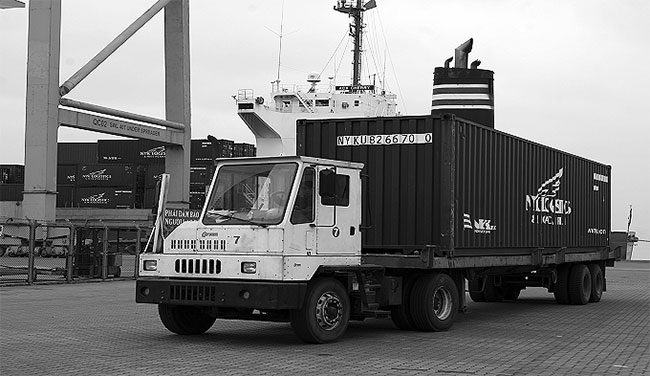Vinalines’ failing foreign joint ventures

SP-SSA International Container Services Joint Venture (SSIT), a joint venture between Vinalines and Carrix/SSA, is in a temporary halt of operation. The remaining three joint ventures, namely SP-PSA International Port (between subsidiary Saigon Port and Singaporean PSA), CMIT (between Saigon Port and Danish company APMT), and CICT (between Vinalines subsidiary Cai Lan Port Investment JSC (CPI) and Carrix/SSA) are contributing significantly to Vinalines’ debts.
According to its 2014 financial report, Vinalines has accumulated an overall debt of VND20.847 trillion ($980 million), of which CMIT contributed VND2.112 trillion ($99 million), SP-PSA VND1.691 trillion ($80 million), SSIT VND1.186 trillion ($55.7 million), and CICT $95.6 million.
SP-PSA, CMIT, and SSIT, all located in the Cai Mep-Thi Vai area, are having trouble attracting cargo. In 2015, the number of ships to this area decreased from 16 to 7 a week. The ports have trouble competing with Saigon Premier Container Terminal (SPCT) and Saigon New Port in attracting intra-Asia ships after the dredging of the Soai Rap passage.
Initially, the price of service at these ports was calculated at $57 per 20 feet container and $85 per 40 feet container. The market price is now $32 per 20 feet container and $50 per 40 feet, which is lower than the Vinalines companies’ breakeven price, forcing the ports to incur losses and operate under their designed capacities.
Meanwhile, goods passing through CICT, such as wood chips, cement, and iron ore all have low added values. As of the end of 2015, CICT has incurred a debt of $92.4 million to banks and $3.2 million to contractors. According to Vinalines’ acting general director Nguyen Canh Tinh, CITC cannot pay the debt at all. It can only find money to maintain minimum operation.
Tinh said that these ports may improve performance in the future with better management, but it is difficult for Vinalines and Saigon Port to keep them operating over the next few years. Vinalines needs to divest from these ports to decrease its debt burden.
SSA Marine and sponsor IFC are waiting to negotiate with the investor that is going to help Vinalines reschedule these debts. SSA Marine has just recently contacted the Ministry of Transport, asking for information on the equitisation of Vinalines and prospective investors after Vinalines’ IPO. SSA Marine also inquired about the ministry’s plans regarding the state divestment from Saigon Port in order to make plans on financing SSIT and CICT operations, the two joint venture ports between SSA Marine and Vinalines.
According to Le Anh Son, chairman of Vinalines’ board of members, the company’s investment in these ports falls between $200 million and $350 million per port. 70 per cent of the sum is borrowed from financial institutions. Vinalines recently requested the lenders for a 1-2 year extension to pay the debts.
What the stars mean:
★ Poor ★ ★ Promising ★★★ Good ★★★★ Very good ★★★★★ Exceptional
Latest News
More News
- Hundreds of businesses to attend Vietnam Medipharm Expo 2024 (November 26, 2024 | 13:45)
- Top 10 reputable pharmaceutical, medical supply companies in 2024 announced (November 26, 2024 | 09:32)
- Improving the effectiveness of social policy credit (November 15, 2024 | 17:22)
- Hanoi seeks ways to bolster investment, trade, and tourism with South Africa (October 31, 2024 | 16:21)
- Ba Ria-Vung Tau reports increase across economic indicators (October 24, 2024 | 09:00)
- Logistics promise for foreign investors (October 17, 2024 | 16:02)
- Ensuring technological progress in northern midlands and mountainous regions (October 10, 2024 | 09:00)
- Manufacturing production suffers after Typhoon Yagi (October 01, 2024 | 17:11)
- Vietnam’s economy on track for 6.5 per cent growth despite Typhoon Yagi, says HSBC (October 01, 2024 | 16:46)
- Vietnam urges China to expand market access for agricultural products and strengthen trade ties (October 01, 2024 | 16:42)















 Mobile Version
Mobile Version